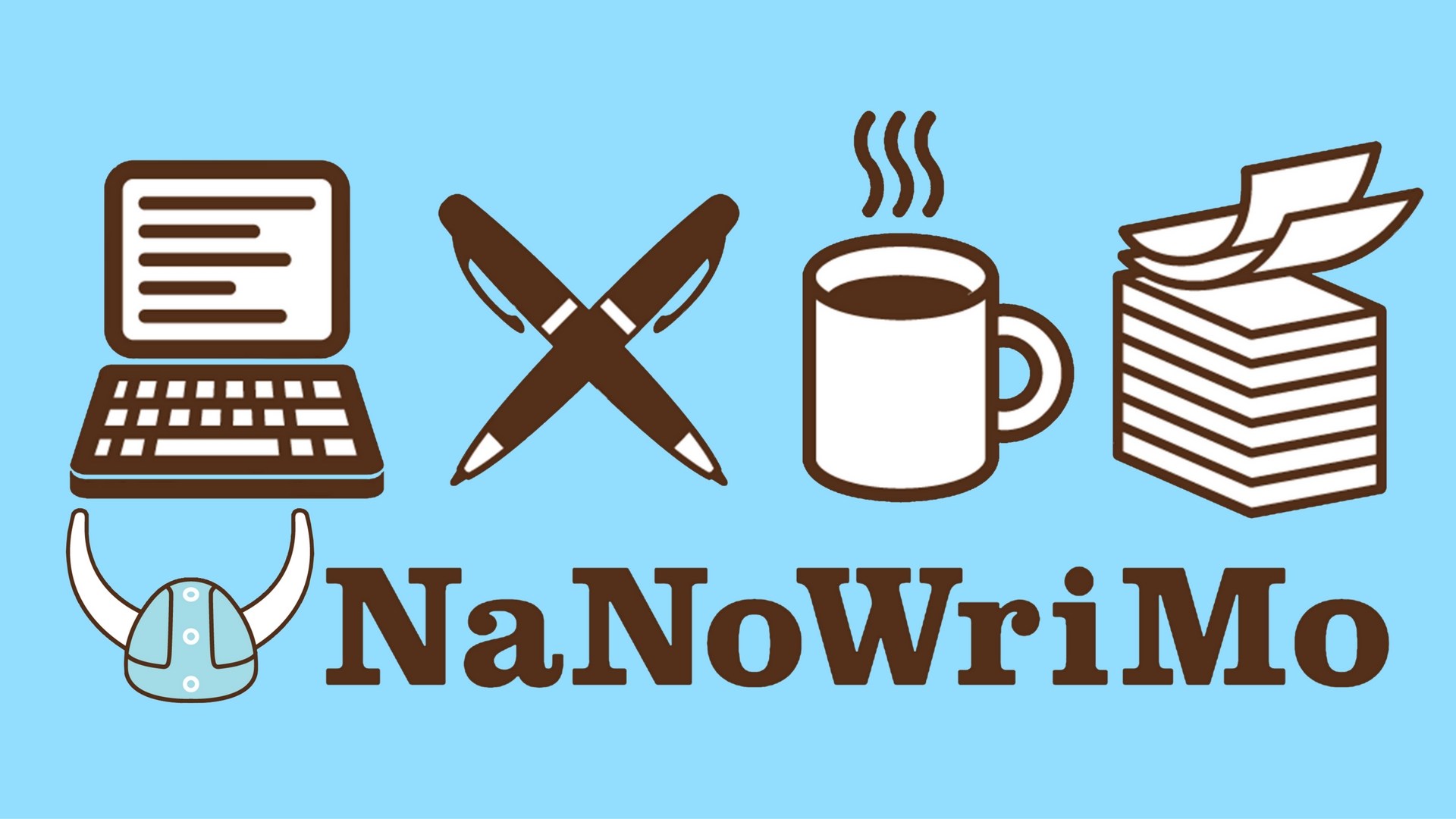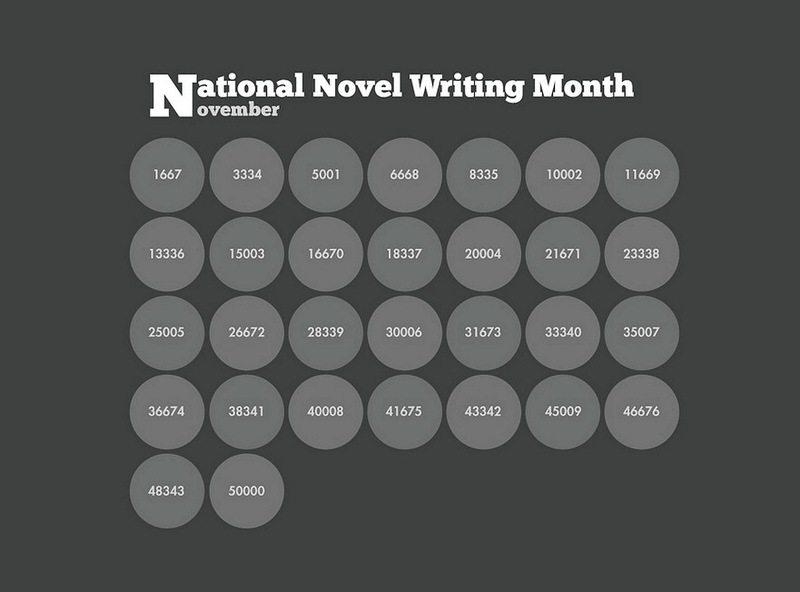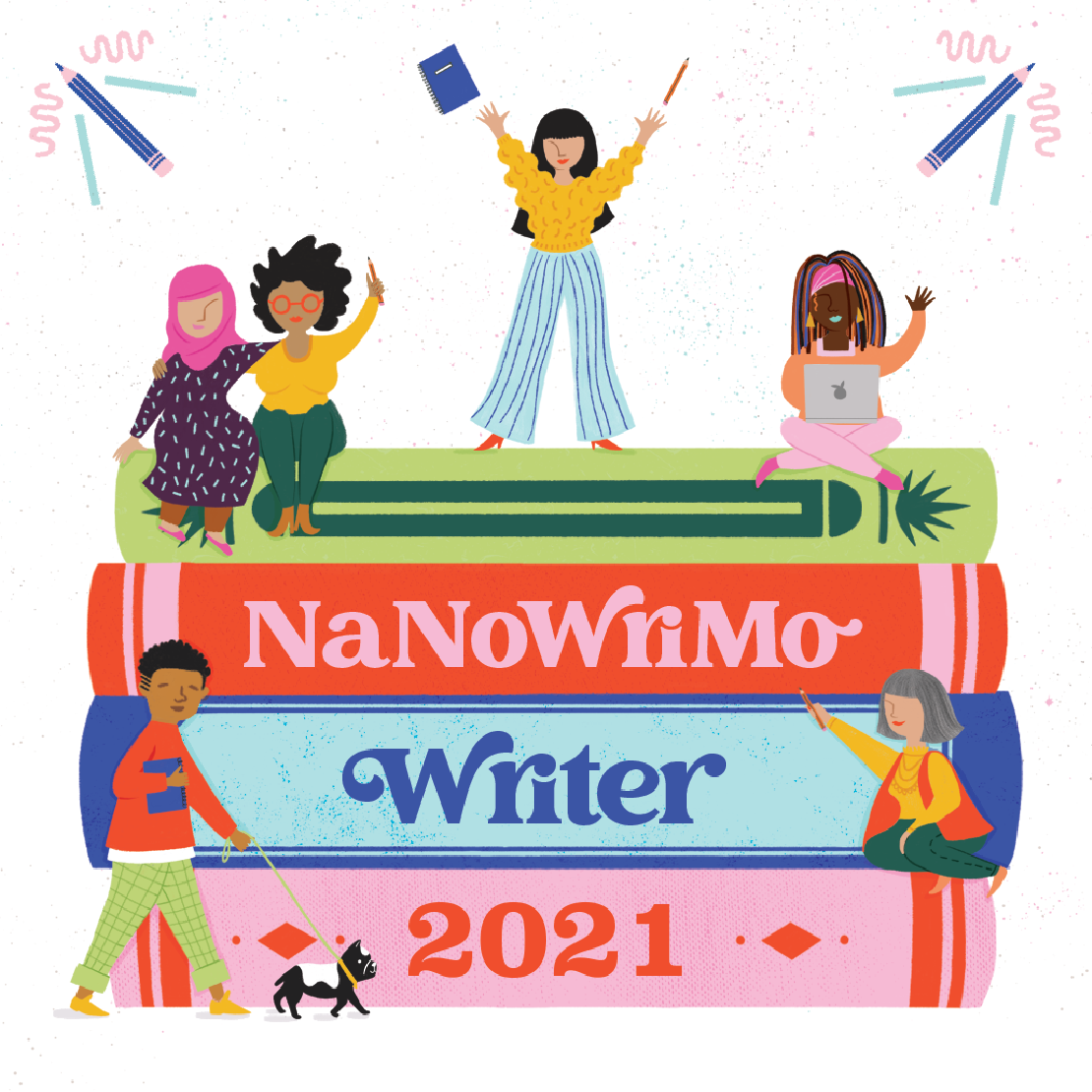
NATIONAL NOVEL WRITING MONTH (NANOWRIMO)
For those of you that don’t know, NaNoWriMo is a month-long writing challenge that takes place every year in November. The challenge is to write a 50,000-word novel in 30 days, which works out to about 1,666 words a day.
With such an intense daily word count, the idea is that you are solely focusing on getting that crappy first draft down on paper. No rewriting. No editing. Those are things that come later. For now, you just write the story. And, if you’re writing 50,000 words in a month, a lot of those words are going to be crappy. And that is okay. It’s good, even.

Prepare Your Writing Environment
Where will you write? How will you write?
Decide this now, before November gets into full swing, and you’ll be setting yourself up for success.
In the interest of speed, most NaNoers choose to type their manuscripts—there are a few brave souls who write longhand, but not many, the choice is yours and what you feel comfortable doing.
Set up your computer so that you have good ergonomics and aren’t risking carpal tunnel syndrome or other issues from typing so much in a harmful way. Review these great stretches for writers and take the time to use them every hour or so, or when you start and finish a writing session.
Try to find a calm, quiet place to do your writing. If possible, set up a dedicated writing nook so that you can psychologically get into the mindset to focus on your writing whenever you go there. It’ll help you get more done!
Prepare Your People
Prepping to do NaNo the right way isn’t just a matter of getting your space set up—you’ll also need to prepare the people in your life for the challenge you’re about to undertake.
Have a frank discussion with your family, close friends, and maybe even your boss or co-workers about what you’re planning.
Let them know that you may not be available as much as usual, and that you’ll need more advance warning of events and activities that they want you to participate in.
At work, try to plan ahead so that you have extra lead time for crucial projects and don’t drop the ball because you’re busy thinking about and writing your novel. Let your co-workers know that you won’t be joining them for lunch most days, but make plans to stay engaged.
Let your family know they’ll have to take on more for themselves this month—you might not be packing all the lunches, walking the dog, and vacuuming everything every day.
Some NaNoers have found that November is a great time to teach their families to contribute more around the house; by being clear about the need to write and treating NaNo like a job or other key responsibility, they’re able to get other members of the household to contribute more. After November, you can keep up that momentum and use the newfound time to edit your book or write another one! Never feel guilty about writing, use your passion to push ahead and do what you would like to do during November.
Do Your Pre-Writing Work
The timer for NaNoWriMo starts at midnight on November 1—but that doesn’t mean that you can’t prep for it in advance.
A lot of the work of writing a novel actually happens before you write the first word of prose.
That’s not breaking the rules—you’re not cheating by outlining and creating character maps, inspiration boards, etc. before November 1. You just can’t start writing the actual narrative until then.
What kinds of things can you prepare in advance?
- Choosing a genre
- Brainstorming and mind mapping ideas
- Creating a general plot arc
- Character profiles
- Names, backstory, motivations, archetypes
- Worldbuilding
- Setting, time, place, charting any sci-fi or fantastical elements
- Scene notes
- What are some key scenes that you’ll need to write to get from Point A to Point Z?
You can also work on determining your ideal reader and how you’re going to meet reader expectations during this pre-writing phase, which will help when you’re editing, publishing, and marketing the book later.
Expand characters and explore their goals
Describing your characters might be the most important part of preparing for your month-long writing adventure. As F. Scott Fitzgerald said, “Character is plot, plot is character.” Consider:
What do your characters look like?
What are they curious about?
What do they love? What breaks their heart?
What do they want? Why?
What is her core belief about herself?
What is his core belief about others?
What is her key fault?
What or who gets in the way of her getting what she wants?
Set the scene
Here are 5 tips to plan and link individual scenes to create structured story arcs:
- Start with what you want your scene to reveal (purpose) …
- Decide conflicts or unknowns to plant in your scene. …
- Think about who your scene will involve. …
- Brainstorm further developments. …
- Group scene ideas into larger units.
The average scene should be between 1,000 to 2,000 words.
Create conflict
Your Protagonist
- More than anything in the world, my protagonist wants:
- But he/she is afraid of:
- And his/her greatest weakness is (is it something like “falling in love too easily” or “crossbows”?):
Physical Antagonist
Complete this section if you have a physical antagonist.
More than anything in the world, my antagonist wants (this can be as simple as humiliating the protagonist or something a little more ambitious like world domination):
- My antagonist’s “beef” with the protagonist is:
- My antagonist is afraid of (long-haired bunnies?):
- His/her/its greatest weakness is:
Abstract Antagonist
Complete this section if you have an abstract antagonist.
- The antagonist in my novel is not a living, breathing being. It is:
- If my protagonist does not battle against this antagonist, it will eventually (ruin his or her life or cause death?):
- My protagonist is battling against this antagonist by:
Outline your story
Are you a pantser or a plotter or combo platter? If you’re a pantser, you might think plots are the work of the devil, sent to make stories feel wooden and contrived. If you’re a plotter, you may wonder how anyone finishes a book without a detailed TripTik. For those of you doing NaNoWriMo, think about creating a loose outline: what strange and mysterious things will happen as your character seeks his fortune or the secrets of her past? As Ray Bradbury wrote, “Plot is no more than footprints left in the snow after your characters have run by on their way to incredible destinations.”
Set Challenges and Rewards
As you head towards your NaNo goals, you may find yourself slowing down at points, stuck on what comes next or just plain unmotivated to keep writing at such a crazy pace.
How do you get over the hump?
Set challenges and rewards!
Humans are naturally motivated by competition, so make meeting your word count a game.
Try doing a Word Sprint, either on your own or with a friend who’s also doing NaNoWriMo; you can even find sprint partners in the NaNo forums.
– – – – – – – – – – – – – – – – – – –
Above all enjoy the month, have fun, meet fellow writers, join Facebook or Twitter groups, pop along to our weekly get-togethers, chill out when not writing, please do not get stressed about your number count as just writing is enough.



Excellent Info.